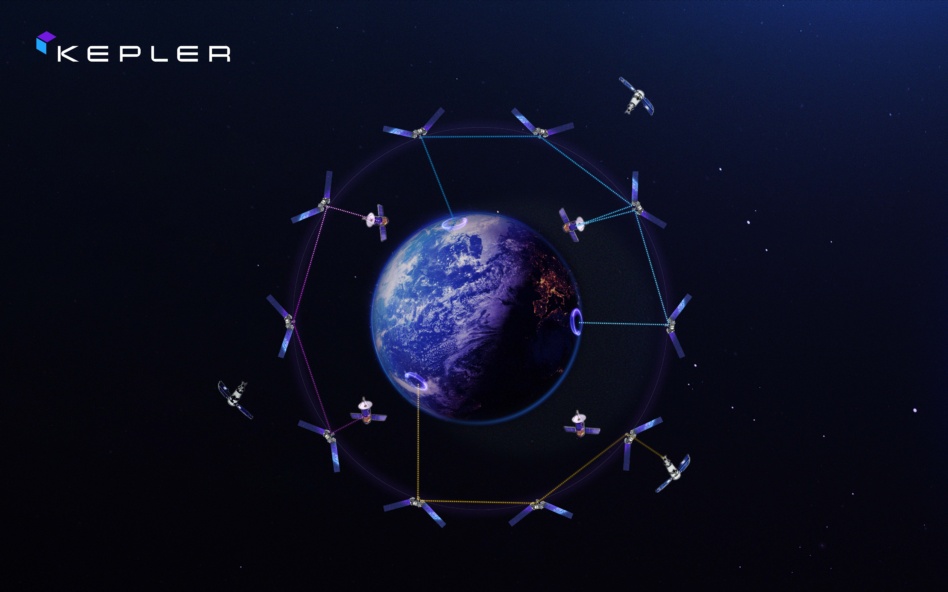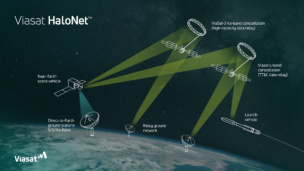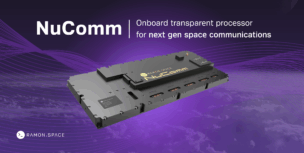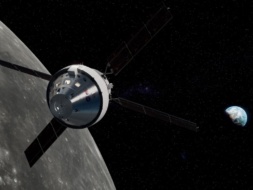Not long ago, laser communication was experimental, tested through one-off missions and technology demonstrators. But today, Kepler Communications has proved that optical networking in space is no longer theoretical—it’s operational.
Several critical shifts have propelled optical communications into reality:
- Standardization: The Space Development Agency (SDA) drove industry-wide adoption of interoperable optical standards, enabling terminals from multiple vendors to “speak the same language.”
- Industrial scale: The optical terminal market has matured, with hundreds of terminals now in production rather than one-off prototypes.
- Surging demand: Modern constellations require near-instantaneous data transfer creating an urgent need for faster, real-time communications.
“There’s a perception that laser comms are still where they were 10 years ago,” said Stephen Lau, Kepler’s Optical Architect. “But the technology, the standards, and the demand have evolved dramatically.”
Kepler seized the moment by becoming the first commercial operator to announce the successful validation of an SDA-compatible optical terminal in space. Their early efforts have set the stage for a new era of space connectivity.
Kepler’s Advantage: Speed, Vertical Integration, and Reliability
Engineering reliable optical communication isn’t just about the terminal itself—it demands precision in satellite control and maneuverability. Kepler focused carefully on spacecraft attitude control, vital for accurately aiming laser links across vast distances.
“We were laser-focused—pun intended—on making the optical terminal the primary payload,” Lau said. “Every part of the satellite had to be engineered around making laser comms work reliably and repeatably.”
Their vertically integrated approach accelerated progress:
- Tight coupling between spacecraft design, build, and operations.
- Daily on-orbit debug-test-tuning cycles.
Ten sat deployment: Kepler envisions optical communications evolving much like the terrestrial cell phone network. The first tranche of ten optical data relay satellites will field terminals operating at 2.5 Gbps under the SDA standard and is scheduled to launch in Q4 2025.
In approximately two years, a second tranche will introduce 100 Gbps terminals in support of ESA’s High Throughput Optical Network (HydRON) program, and expand the constellation to offer full coverage in low Earth orbit.
Kepler is committed to backward compatibility, ensuring customers investing today won’t be stranded tomorrow. In space, as on Earth, connectivity will increasingly resemble upgrading your phone rather than rebuilding the network from scratch.
An Intelligent Network: Kepler’s On-Orbit Compute
Kepler isn’t just relaying data—they’re processing it in space. With the recent rollout of on-orbit compute capacity across their optical data relay network, Kepler is pushing the boundaries of what’s possible.
Their on-orbit compute capability enables customers to:
- Pre-process, filter, and compress mission data before it’s sent to Earth.
- Run AI/ML algorithms in space for faster decision-making at the edge.
- Optimize bandwidth and reduce latency for critical applications.
Initially, Kepler’s compute services will focus on high-priority government and commercial missions that demand rapid responsiveness, such as Earth observation, weather monitoring, and national security assets. Over time, as capacity scales, the service will expand to support a wider range of space operators.
Kepler’s vision is clear: a network that not only connects space assets but empowers them to think, process, and act independently.
Enabling Customer Access: Overcoming Barriers to Adoption
While the future is bright, customer adoption faces some hurdles. Kepler is tackling these challenges head-on by:
- Supporting new missions: Existing satellites can’t retrofit optical terminals. New missions must be designed to integrate optical systems.
- Reducing size constraints: Kepler is driving vendors to develop smaller optical terminals suitable for sub-50 kg satellites, expanding access to a broader range of missions.
- Leveraging vertical integration: With an in-house production facility and strong supply chain relationships, Kepler can manufacture optical-ready satellites rapidly.
- End-to-end service: Kepler aims to be a full-service partner, making it easier for customers to launch and operate optical missions without steep technical barriers.
Kepler isn’t just providing a network—they’re building the ecosystem to make optical adoption practical.
A New Era of Space Communications: Real-Time Control, Smart Processing, and Infinite Possibility
Kepler’s long-term vision is simple but transformative: satellite connectivity should be as easy as connecting to your smartphone.
Today, commanding satellites involves long gaps, waiting hours for narrow communication windows. With Kepler’s optical relay network and on-orbit compute capabilities, operators will have near-instantaneous access to spacecraft for health monitoring, onboard data processing, command uploads, and real-time troubleshooting.
“When critical data is generated or something goes wrong on a $50M satellite, you shouldn’t have to wait three hours for a ground station pass to find out,” Lau said. “Kepler is building the infrastructure to ensure communications with space become instantaneous.”
This capability unlocks enormous potential:
- Real-time Earth imaging and weather monitoring.
- Onboard AI processing for faster decision-making.
- Faster response to critical space operations.
- Lower cost and complexity for satellite commissioning and maintenance.
Kepler is building the network for a future where satellites and other space assets are not isolated, but fully integrated, intelligent sensors in a real-time, global information network. Much like the terrestrial internet revolutionized life on Earth, Kepler’s optical and on-orbit compute networks aim to revolutionize the space economy.
The infrastructure is being built today. The applications of tomorrow will soon follow.




